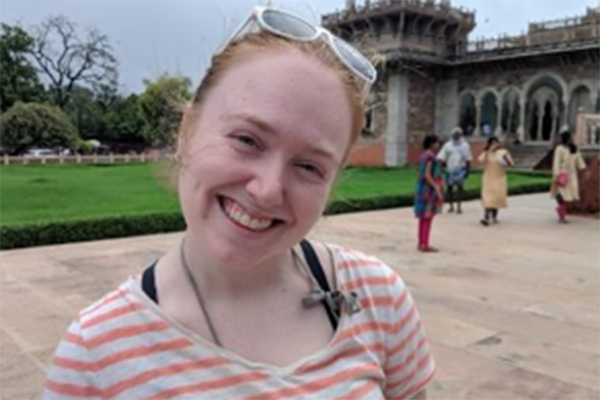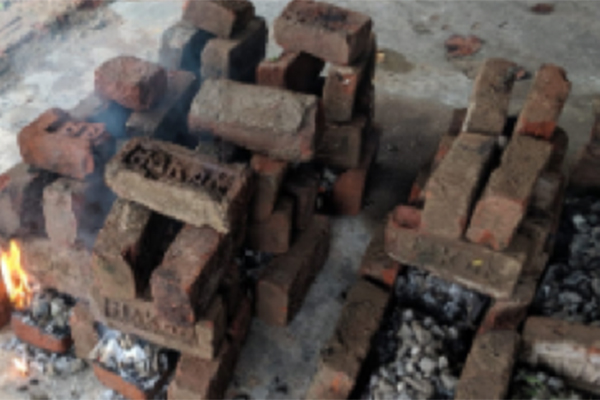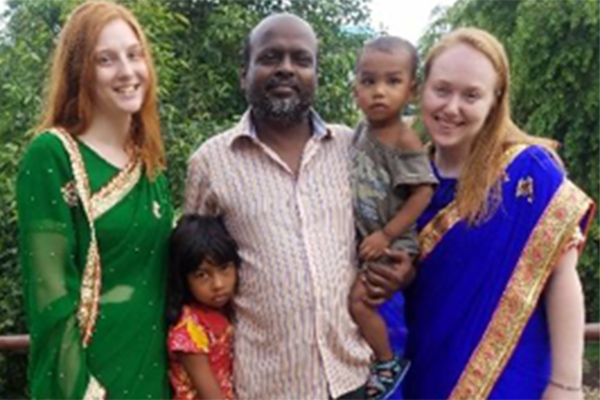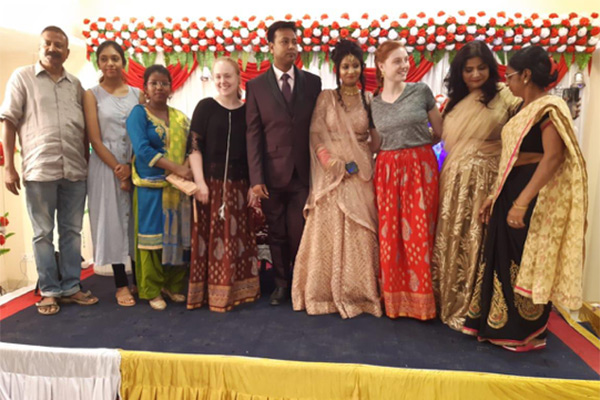Dayton Engineer
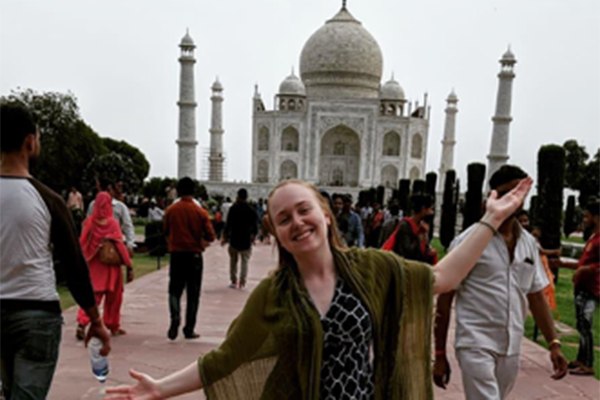
Chemical engineering student designs in India through the University of Dayton's ETHOS Center
By Molly Savage, chemical engineering major and ETHOS Center participant
As a University of Dayton senior chemical engineering student, I learned three main principles in my School of Engineering classes: importance of teamwork, creative problem solving and making appropriate assumptions based on boundary conditions given for a specific scenario. These principles were challenged on multiple occasions throughout my ETHOS immersion in Patna, India, where I researched and designed solar ovens for a non-profit called Solar Alternatives and Associated Programmes (SAAP).
It is hard to be an effective communicator if your teammates do not speak your language. While my co-workers in India knew a few words in English, the most effective communication occurred through hand motions, facial expressions and detailed drawings of my design. And even then, what I thought was obvious on my prototype was not always understood nor was it the best design choice with the resources available. I was always amazed at how the final design turned out to be so different and so much better than I had originally imagined in my head. While they did not have words to communicate their passion for their work, they communicated in their smiles and head shakes, which, at times spoke louder than any words ever could.
Brainstorming is one of the most important steps in problem solving. The first homework question for my senior design class was “come up with 20 ways to hold paper together.” It was difficult to find a feasible solution without listing a few simple yet out-of-the-blue ideas, for example, holding the paper together with a Band-Aid.
Over the summer, I was tasked with drying bricks after a monsoon, so they could start heating up right away when I put them in my solar oven prototype. After discovering that I didn’t have access to a lighter, kindling nor any other fire-starting materials, I channeled my inner cavewoman to create something hot enough to turn water to steam. I never imagined that I would fire bricks using church candles and egg cartons, but I also never imagined a culture where children didn’t know what licking the spoon meant because they didn’t have an oven or access to electricity for baking.
My seemingly simple task of starting a fire turned into something that took more thought because I had to put aside my own cultural bias and analyze what resources were available to me. In the same way, the people I was living with had to analyze their own resources and find ways to cook without access to electricity. While I never in my wildest dreams imagined baking brownies in a small pressure cooker, it was worth the giant smile on my friend Rosemary’s face when we handed her the spoon.
Sometimes the simplest and most obvious ideas are the easiest to question because of our own cultural and societal biases. We think that there must be a more efficient or more economical way of solving a problem – but sometimes, life really is that simple.
Often in engineering, there are certain assumptions that have to be made to make the problem solvable, such as neglecting small heat losses or stating that the pressure is constant. The most popular assumption that I make in my engineering classes is that the system is at steady state, meaning that the variables are constant despite the processes trying to change them. This works really well for textbook problems that have one obvious solution, but in reality, life is never at steady state.
One weekend, I took a trip with a family to get their baby baptized and spent 10 hours in a car with no air conditioning next to an elderly woman who could not stomach the bumpy dirt roads. Despite her constant car-sickness, we never stopped for a break. She was given water and the window was opened for her, but we just kept driving.
In another instance, I witnessed a Hindu and a Baptist become baptized into the Catholic faith, so they could get married and be accepted by their families after three years of living together in secrecy. No paperwork was filled out, and they didn’t go through RCIA (Rite of Christian Initiation of Adults) or learn about the practices of Catholicism. It was the most haphazard and yet the most joyful ceremony that I have ever experienced.
What amazed me about these experiences was that regardless of what these individuals were going through, we kept moving forward. It made me appreciate that I only have one life, and I have to keep living it regardless of the difficulties that I may face along the way. Life happens, but from what I witnessed in the communities of India, it doesn’t matter – support and love are always given. That will remain constant.
Overall, my experience in India taught me that what I think are “engineering problems” are often not even problems to begin with in a different culture, they are just a way of life. Our cultural and personal differences aren’t good or bad, they’re just different. And it’s in recognizing and working to understand those differences where we can find the solutions to the problems that are really worth solving.

